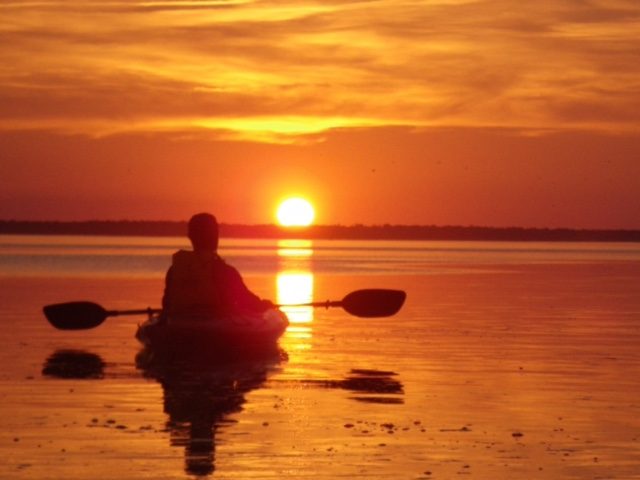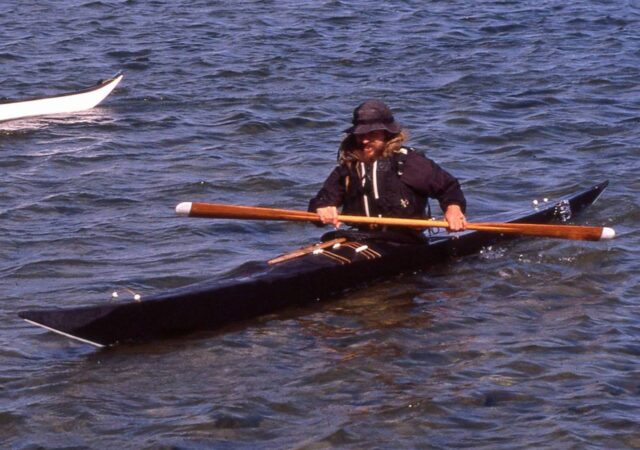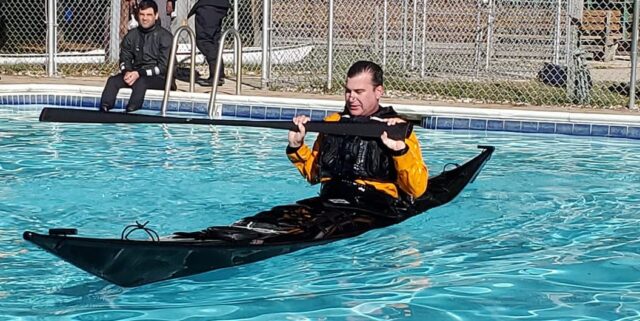Indigenous People’s Day is coming up, this year on October 9th, sharing the date with Columbus Day. While we have a bounty of historical artifacts and accounts from the first moment Europeans stepped foot on this newly “discovered” continent, not much remains from the thousands of years Indigenous People populated the same land. They were the embodiment of leave-no-trace ethics.
However, one of their inventions has not only survived for centuries, today it is one of the most popular activities in the world.
While the original design bears little resemblance to the plastic recreational boats most people paddle today, the kayak has existed for 4,000-5,000 years. Believed to have first appeared in Siberia, the Inuit of Greenland perfected the design along with the paddling skills required to turn this small boat into a deadly hunting machine. In a place where most food sources lived in the sea, the Inuits needed a stealthy, maneuverable vessel to stalk their prey. And they needed a covered deck to keep out the ice-cold water.
“Kayak” translates to either “man’s boat” or “hunter’s boat.” And that’s exactly what it was. Each man, with the help of his wife, built his own boat with his specific measurements (the length was about three times the span of his outstretched arms, the cockpit was the width of his hips plus one or two fists, etc.) so that he wasn’t as much in the boat as part of the boat.
They built a frame out of either driftwood or animal bones and stretched walrus or seal skin over it. They rubbed whale, seal, or walrus fat into the animal skin to waterproof it. This had to be done over and over, as the treatment would only last about four to seven days. Inflated seal bladders added extra buoyancy.
They learned to roll their kayaks not just to impress friends at parties – rolling was key to survival. With the frigid water in which they paddled, if you came out of your boat, you’d have only minutes before your body started shutting down. No one knew how to swim. Try learning the breast stroke in 35 degree water! If anyone died from not being able to roll their kayak, it was usually because the hunter had borrowed someone else’s kayak.
Kayaks caught the attention of Europeans in the 1700s when Russians, exploring the northwest coast of North America, first witnessed the skills of the Aleutian kayakers. They were so impressed by their hunting abilities they kidnapped the paddlers along with their boats and forced them to hunt Sea Otters for them. By the 1800s, the Germans and French were using kayaks recreationally. And kayaks made their Olympic debut in 1936 in Berlin.
Now kayaks are mass produced using plastic molds. They are colorful, wide, stable, and comfy. These user-friendly designs are responsible for introducing millions of people to the beauty of marine environments.
The kayak is an enduring gift to the modern world from native people. And even with all its high-tech iterations, it is still the simple act of putting the blade in the water that propels us back to an intimate connection with our surroundings.

Side Note: If you’re curious about traditional Greenland kayaks and paddling skills, you’re in luck! Every fall a group of Greenland-style paddlers have a retreat right here in Delmarva. Called the Delmarva Paddler’s Retreat, they gather at Camp Arrowhead on the northwest shoreline of Rehoboth Bay for a weekend of learning traditional Greenland paddling skills (lots and lots of rolling!). They even have a skin-on-frame boat building workshop (they don’t still use animal skins). Here is the event website: https://www.delmarvapaddlersretreat.org
- Photo courtesy of Chris Beckman
- Photo courtesy of Chris Beckman
- Greenland style kayak and paddle, Photo courtesy of Delmarva Paddler’s Retreat FB page
- Rolling session Photo courtesy of Delmarva Paddler’s Retreat FB page
Sources for this blog post:
https://ocean.si.edu/human-connections/history-cultures/kayaks-origin-story
https://en.wikipedia.org/wiki/Kayak
https://www.nathab.com/blog/greenland-and-the-culture-of-the-kayak/




